- How Long Should You Spend in Hakone? - 22 June 2025
- When Are Japan’s Public Holidays? - 19 June 2025
- What to Do With Your Bags Before Check in or After Checkout in Japan? - 9 June 2025
If you’re planning on travelling on the bullet train during your Japan trip, it’s important to know the rules about where your luggage is allowed to go on the train, as it might change how you need to plan your trip. Here’s what you need to know…
Quick Summary
Bags measuring between 160cm and 250cm must now be stored in a designated area on certain Shinkansen trains, including the popular Tokyo to Kyoto route.
You need to book a seat reservation that includes this area to use it.
The guards will move luggage if it’s in the wrong place.
Read on to find out how to measure your luggage, the different areas where bags can go on the train, how to book the luggage space, and what to do if you don’t want to carry your luggage.
Originally published: March 2023. Latest update: June 2025 to add new rules re the use of the oversized baggage compartment. This post is reviewed annually for accuracy and updated as needed if major changes to the rules are announced.
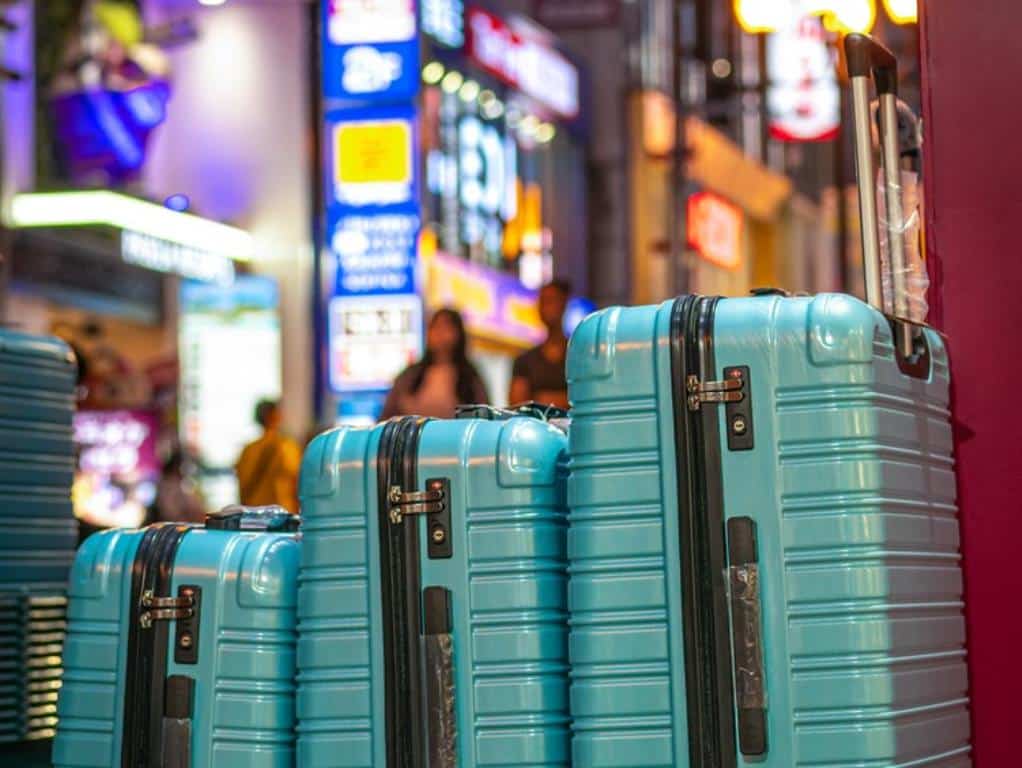
The tape measure is out in our house.
While I’m now used to going to Japan carrying as little as humanely possible and can therefore get a month’s worth of packing into a tiny case, Mr Japlanease is also coming on our next trip, and he is not a super light packer.
So I need to make sure the suitcase he has in mind conforms to the suitcase rules on the Shinkansen (bullet train).
If you want to do the same – or are reading this because you saw the headline and suddenly thought, erm, what rules? Here’s what you need to know…
Where Can You Put Luggage on the Shinkansen?
Technically, you can put luggage in four different places on the Shinkansen.
In front of your legs
On the overhead rack that runs along the top of the carriage
In a gap behind the last five seats in every carriage
In a designated luggage compartment/rack
Which of these you can use depends on two things: the lines you are travelling on and the size of your suitcase, and this is where people often get confused.
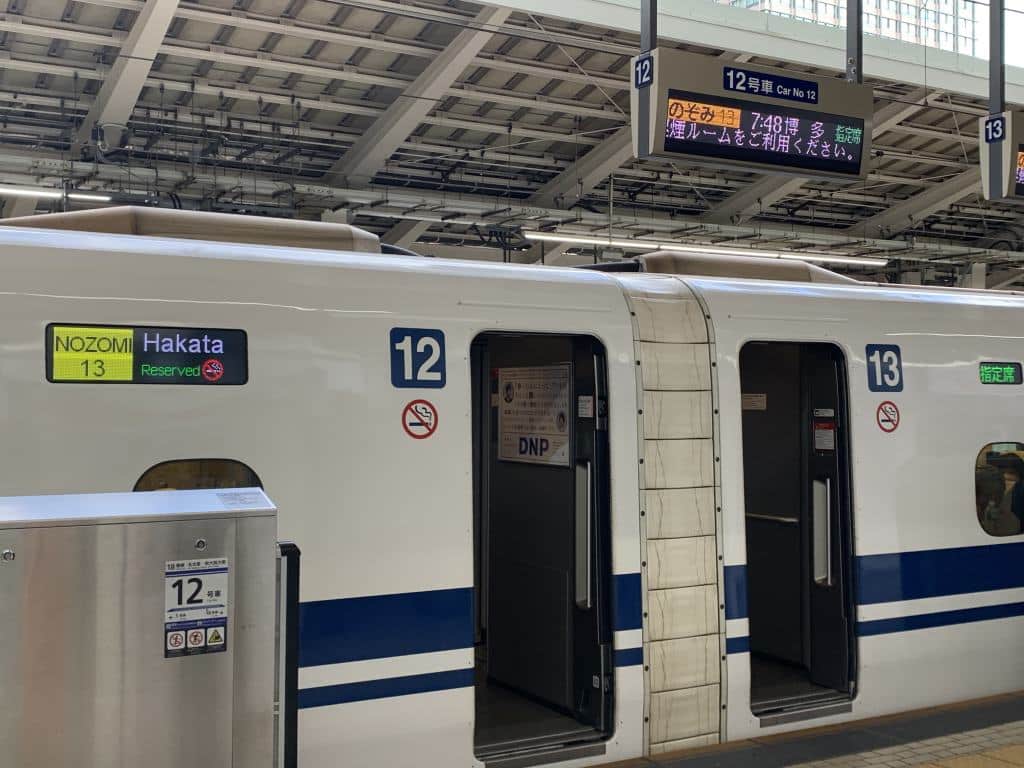
What Lines Do Luggage Rules Apply To?
They are only for three Shinkansen routes, but they are the ones the average tourist is most likely to travel on. They are…
The Tokaido Shinkansen
This is the busiest line in Japan, and it runs between Tokyo and Kyoto/Osaka. If you’re travelling to Shin-Yokohama, Odawara, Shin-Fuji, Nagoya, Shizuoka, Shin-Osaka, Kyoto or any of the stops on this line in between by bullet train, then you’re travelling on the Tokaido.
The San’yo Shinkansen
This route runs west between Osaka and Fukuoka, with stops including Shin-Osaka, Shin-Kobe, Hiroshima, Okayama, Fukuyama, Mihara, Kokura, and Hakata.
If you’re visiting Hiroshima, Bunny Island (Okunoshima), Naoshima, and Himeji Castle and are taking the bullet train, you’re probably using the San’yo Shinkansen.
The Kyushu Shinkansen
This runs between Hakata Station in the city of Fukuoka to Kagoshima in the south and includes stops like Kurume, Kumamoto, Izumi and Kogashima-Chuo.
What Are the Luggage Size Rules on These Shinkansen?
Most bags go on the overhead rack or next to your legs in your seat. However, if your luggage measures more than 160 cm or you are unable to lift it above your head to place it on the rack, different rules apply.
How to Measure Your Luggage
Grab a tape measure and measure the following three places
How tall it is (including the wheels).
How wide is it across the front?
How deep is it from front to back?
Now, add all those numbers together.
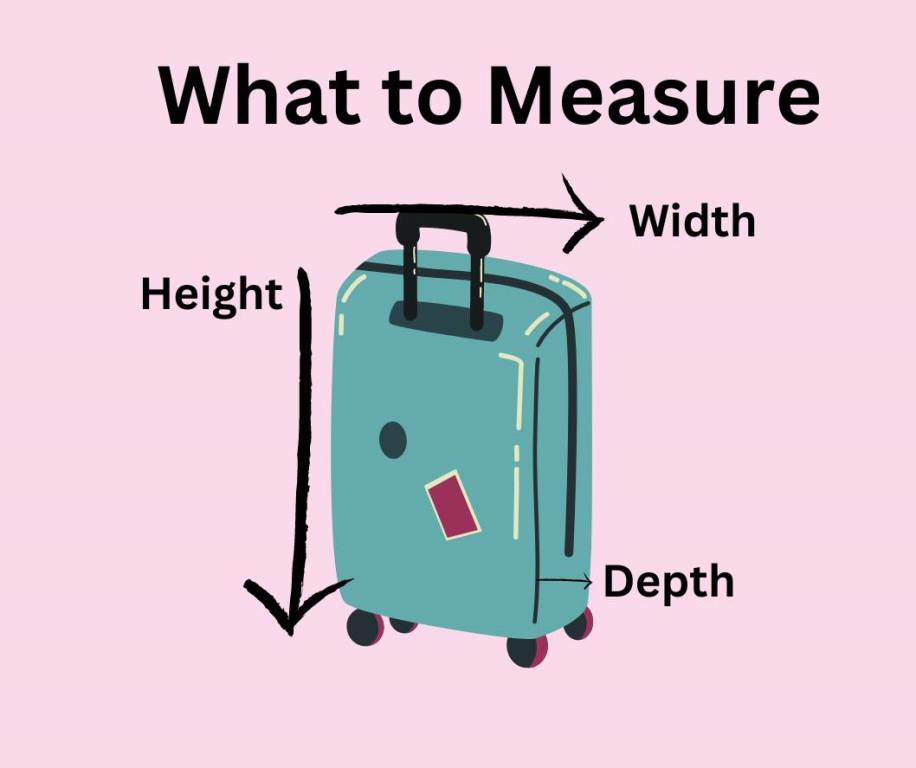
You are all good if the three numbers add up to under 160cm (64 inches). You can either place your luggage on the overhead rack or in the gap in front of your legs.
If it is between 161-250 cm (64-100 inches), you must place your bags in one of the designated oversized luggage areas in the carriage. These are either located behind the last five seats or in the oversized luggage compartment by the restroom.
If your bag is over 251 cm (100 inches), it can’t go on the train with you. It’s unlikely you’ll be carrying a case that big, but just in case, you’ll need to use a luggage service.

Need Extra Planning Help?
Our Japan trip planners can help. You might like our 62-page Japan Super Planner, which includes tips on everything from picking hotels to sightseeing. Or our super-duper Tokyo Disney Planner makes arranging your park trip MUCH easier. We also have specialised planners like Tokyo Tips, Kyoto Tips, or the Rail Pass Planner. Find them in our Planners store – printable and digital versions are available.
The Big Mistake People Make
Many people assume that every suitcase larger than cabin-sized requires an oversized luggage reservation. It doesn’t. To reiterate, if your bag is under 160 cm and you can lift it above your head, it can be stored on the overhead rack. If it is larger, it must be placed in one of the oversized luggage areas. You should also use these if you can’t lift your bag up onto the rack.
Related Read: Find out the other common Shinkansen mistakes people make here.
How The Rules Are Changing from July 2025
The Oversized Baggage Compartments are luggage racks located outside of the seating compartments of the Shinkansen; they’re usually found by the washrooms. Previously, these also needed a seat reservation to use them, but from July 1, 2025, they will be available to anyone.
However, there are a couple of important things to note here. This is NOT the area behind the five back seats. Those still require a reservation.
There are not many spaces in the oversized baggage compartments – they have room for four, maybe five larger cases, so it’s going to be first come, first served.
The biggest issue I can see is that the compartments are located in the area by the washrooms on the Shinkansen. This means your closest one might be at the opposite end of the carriage from where you board the train, and you might not have one right by your car. I can see this causing some confusion when people get on, and I don’t think they have quite thought that bit through! If you want to use this area, I suggest finding out where the closest one is to your seats in advance and boarding close to it.

What To Do if You Need a Luggage Reservation?
If you prefer to use the seats that allow you to stash your belongings behind them, you need to reserve these. The best way to do it is to book your ticket in advance via the SmartEx App.
This is the official JR Railway app. Sign in, choose day, time and route and then when it says ‘Seat Type’ pick ‘with oversized baggage area.’ If a message flashes up saying no seats are available, all of the luggage seats have already been booked on that service. Bookings open 30 days in advance.
If you prefer not to plan too far in advance, you can also book the luggage seats at the ticket office or on the ticket machine located at the station. Personally, if I had bags too big for the overhead rack, or that I couldn’t lift above my head, I wouldn’t risk booking too late, or you might end up hanging around the station for a bit trying to find a train with space.
What if the Behind-the-Seat Area is Empty?
Can’t you stash your luggage there anyway?
Please don’t be that person! For starters, someone else might have booked the luggage space who is getting on further along the line, and then they don’t know what to do with their bag.
Luggage can also stop the seats from reclining, which is inconvenient to anyone who has booked those seats.
Plus, you will put the conductor in a difficult position as they will have to deal with it. And they will deal with it. On one of my recent journeys, a group of older travelers had put their bags behind the seats without reservation. The conductor told them to move them. A few of the party weren’t strong enough to lift them above their heads, leaving everyone kind of stuck.

The fine for placing your luggage in the gap without a reservation is 1,000 yen, and the conductor can relocate your luggage to a more suitable location (which may not be convenient for you).
Why Is It Better to Bring a Smaller Bag Anyway?
Generally, we’d suggest bringing a case under 160cm (it’s one of the first rules in our Japan Packing List). This is actually a pretty hefty-sized case – Mr Japlanease’s case in the picture below is a 160cm case; mine, the small one next to it, is a little bit over cabin size for comparison.
But if you need further convincing, here are some reasons why we’d say to downsize if you can.
Baggage Seats are Limited
You might find your options for when you can travel are more limited as you have fewer seats to pick from.
On a Hikari train, for example, only 35 seats are available in the Ordinary Class cars for those travelling with oversized baggage – about a third of the reserved seats available. A 16-car Nozmi train will probably have double that.
This might not matter on a normal day, but if you’re travelling in a busy period, this could delay your departure by quite a bit if everyone else has already booked the slots before you.
It Might Cost More
You have to pay for a seat reservation to use the oversized baggage seats. This won’t matter if you’re using the Japan Rail Pass, or some regional rail passes, as these are included for free as part of the service, but if you’ve worked out it’s not the cost-effective option for you, then you’ll be cancelling out some of the savings by having to use reserved seats.
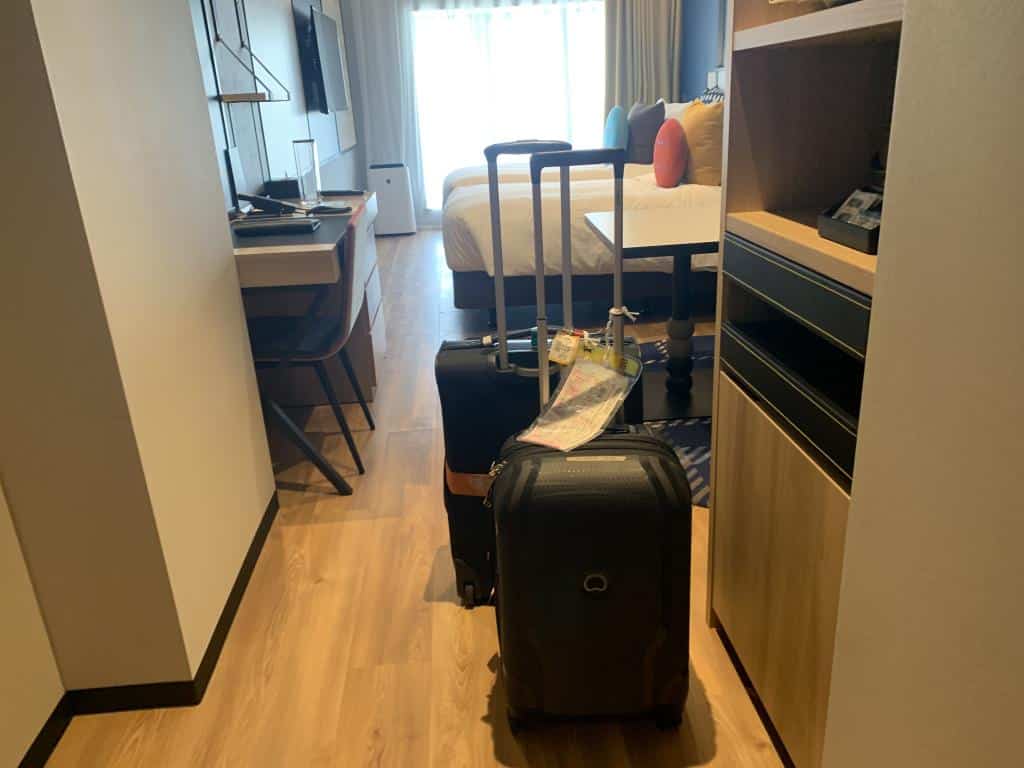
Comfort
You may not be able to recline your seat with the luggage behind it if your cases are very large.
Flexibility
It’s harder to just turn up at the station and book a train if you need to use the reserved luggage area. It does get booked out.
Potential for Putting Your Back Out!
A bag close to 160cm is pretty large, which means it can also get heavy – but don’t forget, you’ve either got to put this in front of your legs, which is unlikely to happen, or lift it, over your head to get it onto the overhead rack – and get it back down again when you reach your stop. If your bag is heavy, that will be a chore.
If you don’t think you can lift your bag and it won’t fit in front of your legs, you can book a seat using the oversized luggage area.
Other Reasons
Other reasons you might want to pack light include lugging your cases around stations, which can add up to a few thousand steps, and don’t always have convenient lifts or escalators.
Also, Japanese hotel rooms can be pretty small, and two big cases and two people in a 16-square-metre hotel room is a squeeze.
Ideally, try to choose a bag that measures under 160 cm. As I said, this is still a pretty large case. If you’re going nuts with the shopping, then you could always add this to a second smaller bag and carry both.
Related Read: If you are an overpacker, you might also want to look for a larger hotel room. Have a look at our guides to hotels with larger rooms in Tokyo, and our other guide to rooms that are bigger than average in Osaka.
Save Money with Klook & Japlanease
If you plan on buying tickets or tours from Klook for when you’re in Japan, you could save up to 10 per cent by using the code JAPLANEASEKLOOK at the checkout. Click here to see what’s on offer.
T&Cs apply. Some items, including Tokyo Disney and USJ tickets, are not available for discounts.
Other Questions
Here are some of the other questions you might have about carrying your bags into a Shinkansen.
What If I Have Two Bags?
That’s fine; you can take two pieces of luggage per person onto the Shinkansen.
So, if you have two bags, both of which are under 160cm, it’s fine to carry them both with you.
But if one of them is bigger than 161cm, you’ll need to book a reservation for it.
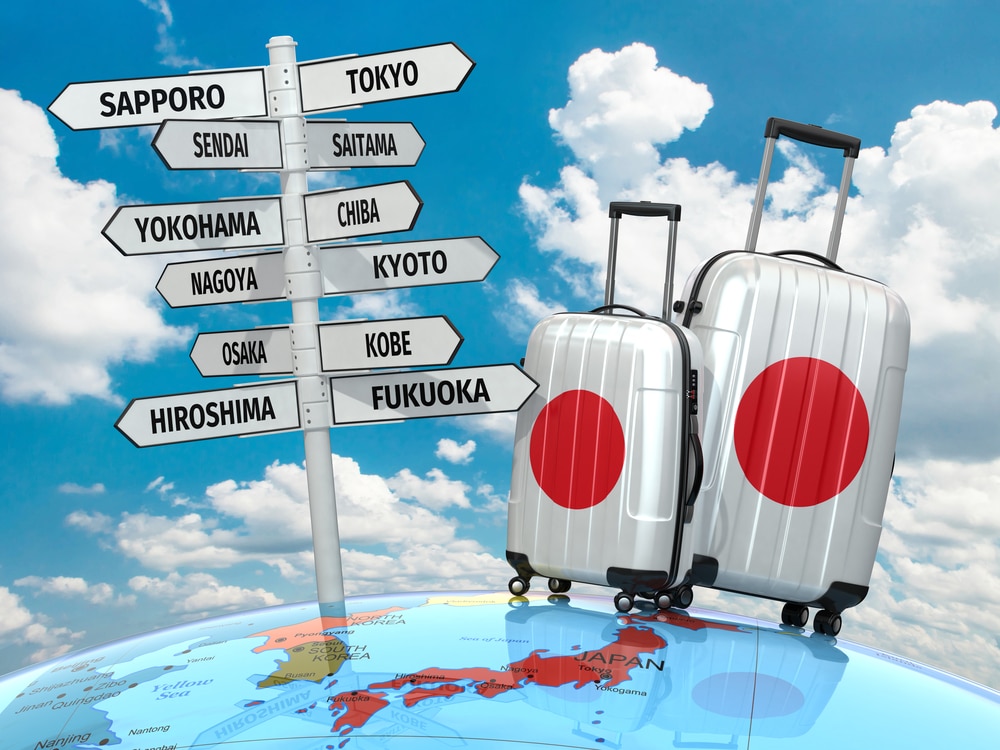
What About Strollers?
You can fold these up and stash them in the overhead rack without a reservation, even if they are over 160cm.
What to Do if Your Bag is Too Big?
If your bag is over 251cm, it can’t go on the train with you, and you will have to use a luggage forwarding service (see below).
What to Do if All the Luggage Seats are Booked?
If you need to travel at a certain time but the luggage spaces are already booked, your best option is to use a luggage forwarding service.
What About Other Trains?
The rules only apply to the three Shinkansen lines named above.
If you’re travelling by bullet train elsewhere in Japan or on another type of train, such as the Narita Express, Limited Express trains, or local trains, you can store your luggage anywhere there is storage space without a reservation.
It’s generally a good idea to avoid travelling in rush hour on commuter trains with lots of luggage, though, as space is tight.
Related Read: Most Shinkansen trains don’t need reserving in advance – but there are five that do. Find out which ones here.
What’s a Luggage Forwarding Service?
A luggage forwarding service is a service that will send your luggage to your next hotel for you. It’s how most Japanese people travel, and the system is safe and very organised. See more tips for using luggage shipping in our specific post on the service.
So, there you go. An explanation of the current rules about taking your bags on the bullet train. If you do have any questions, why not join our Facebook Group and ask them there?
What Else to Read
If you’re still a bit confused about using trains in Japan, we have a couple of posts that might help you out.
One of the most common questions asked is if you need a Japan Rail Pass when you’re basing yourself in Tokyo – and so, we tried to explain it simply.
We also have a post on how to buy bullet train tickets in Japan – and whether you need to buy them in advance.
If you’re travelling further afield, here’s our post on how to tell whether the Japan Rail Pass is worth it for your trip – including comparing it to things like flying or driving a car. See our Rail Pass analysis here.
And if you already have a Rail Pass but are a bit confused about how exactly you use it, then look at this post, which goes through the logistics of using a Japan Rail Pass.

Who Writes This Blog?
My name is Helen Foster, and I’m a journalist and author. My travel articles have appeared in publications including The Australian, Escape, RAC Horizons, Jetstar Magazine, Sainsbury’s Magazine, and more.
I’ve traveled to Japan eight times before – solo and with my partner and visited over 25 towns and cities. My last visit was November 2024 so, everything here is pretty up to date.

